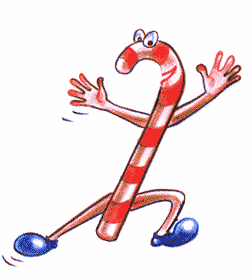
Icky, Sticky, Candy

Rationale: This lesson will teach children about the correspondence i=/i/. Students will learn to recognize spell, and read words containing the spelling i=/i/. They will learn meaningful representation of the word, they will spell and read words containing this spelling in a Letterbox lesson, and read a decodable book that focuses on the correspondence i=/i/.
Materials: Image of lady wiping sticky things off of her hands, coverup critter, letterboxes (one for modeling and one for each student), letter manipulatives (magnetic letters for teacher and small regular manipulatives for students), list of spelling words on a poster, magnetic board for the teacher, decodable text: The Big Hit, computer or device for reading the book, and assessment worksheet
Procedures:
1. Say: In order to become expert readers, we need to learn the code that tells us how to pronounce words. We have already learned to read words like cat and man that have the short a in them, and today we are going to learn to read words with icky, sticky i. Think about a time that you have had a lot of candy and your hands got really sticky. (show image)
2. Say: Before we can read words, we need to be able to recognize what they sound like. Let’s see if you can find the icky sticky sound in a tongue tickler. “Lizzy licked the sticky candy until it was icky” Let’s say it slower and everytime you hear the icky sticky i shake your hands like you are getting the sticky off: “L-i-i-i-zy l-i-i-i-cked the st-i-i-i-cky candy unt-i-i-I i-i-i-t was i-i-i-cky” Can you hear how your mouth opens a little bit and your tongue goes to the bottom of your mouth?
3. Let’s try listening for the icky sticky i in some words. Do you hear i in dig or dog? Pick or stock? Twig or rat?
4. So now that we have practiced listening to the words, how might we spell a word with the icky sticky i in it? If I wanted to spell a word like trick I would start off with four letterboxes. I would put the i in the third box to start off. Then, I hear t-t-r-r- I think I hear a t and an r before the i so I would put those in the first two boxes. T-t-t-r-r-r-i-i-i-c-k. At the end I hear a c sound so I would put the ck at the end to make the word trick. Let’s see if you can spell some words with the letterboxes. (rinse, vest, wind, strap, lick, give sentences for each word).
5. Let’s practice reading some words with icky sticky i in them. (Pull out the poster with words on them) If I was going to read witch I would start with my icky sticky i and look before it. I see a s-s- and then a w-w- to make sss-w-w-i-i- after the i I see the t, c, h which makes the –tch sound when it is all together. So I am going to put it all together ssss-w-w-i-i-tch switch! Let’s try reading some more words. (Same as the letterbox lesson but in print). Have students read words all together, and give each individual a word until everyone has had a turn.
6. Y’all have done such a good job reading and spelling the words, that I think it is time to read a book. It is called The Big Hit. Is is about a tin man who is playing baseball with his friends. He is nervous about hitting the ball when he is up to bat. We will have to read to find out if he will be able to hit the ball! (Split students in pairs to read the book, monitor the reading, after students have read the book, read the book as a class and talk about it)
7. I am so glad that the tin man was able to hit the ball! That was a fun book to read. We have one more thing to do. I want you all to do a worksheet for me. Color the pictures that have the icky sticky i sound on them, and leave the pictures that don’t alone.
Resources:
Book- http://www.starfall.com/n/short-i/si/load.htm?f
Worksheet- http://schoolexpress.com/fws/ws/phonics/vowels/Short_Vowel_Ii_Book_1.4.pdf
Elyssa Hicks, “Look there is a big icky pig”- http://erh0014.wixsite.com/elyssahicks/beginning-reading-lesson-design